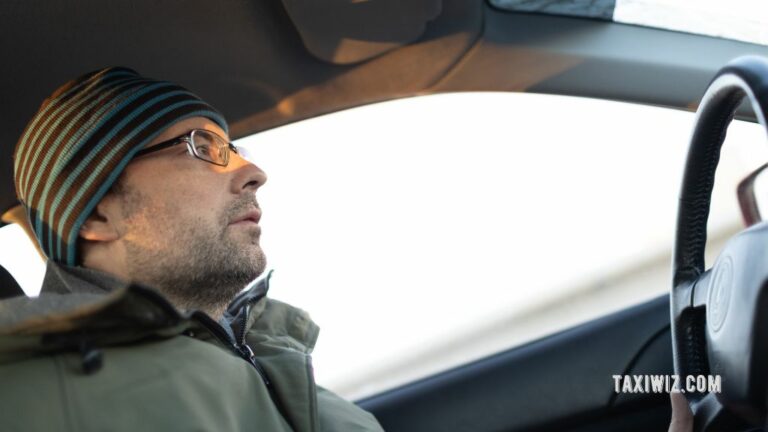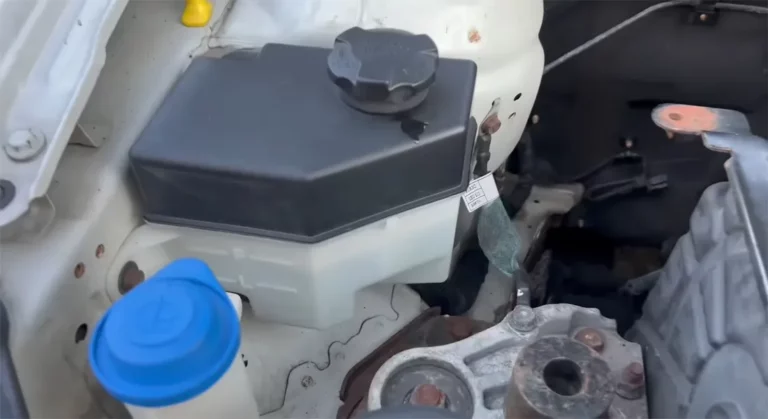Tail Lights Staying On – Causes & How To Fix!
The red tail light on your vehicle is meant to warn trailing cars of your vehicle slowing down, so the two don’t collide. So, it can get confusing if the tail light stays on even when you aren’t braking or slowing down.
Here is a list of the most common reasons your car Tail Lights Staying On:
- Faulty Brake Light Sensor or Switch
- Malfunctioning Brake Pedal
- Fault in the Electrical System
- Installing the Wrong Lights
Regardless of what’s causing it, we can surely agree that it’s very important to fix the tail light as soon as possible. To make sure you handle this properly, we’ll share the causes and recommend the best possible fixes. So, let’s get to it.
Why Are My Tail Lights Staying On?

The following are some of the possible causes as to why the tail lights are staying on.
1. Faulty Brake Light Sensor or Switch
There’s a switch or sensor that triggers the brake light to turn on. If it’s a switch, it usually is linked to the brake pedal. When the brake pedal is depressed, it triggers the switch. If the switch malfunctions, it fails to turn the brake light.
However, a broken switch can also keep the light turned on all the time. The same goes for a broken or malfunctioning switch.
2. Malfunctioning Brake Pedal
There are different ways in which a brake pedal might be malfunctioning. Firstly, it can either be the case where the pedal spring is malfunctioning. The spring forces the pedal to return to its position when you lift your foot off.
A worn-out spring can lose this strength, leaving the pedal depressed. While this braking force won’t be enough to stop the vehicle, it’ll leave the light on.
It can happen when the brake pedal is stuck at a certain position too. Unless you get the pedal back to its original position, the tail light will remain on.
3. Fault in the Electrical System
A flaw in the electrical system can be dangerous for your vehicle as it can lead to unexpected problems randomly. One of the problems a faulty electrical system can lead to is a tail light that never turns off.
What makes this more dangerous than the causes mentioned earlier is, unlike the previous ones that concerned only one component, the wiring is spread throughout the vehicle.
So, there are a lot of grounds to cover, and a lot of cables to troubleshoot in case this is determined as the reason.
4. Installing the Wrong Lights
If you’re facing an issue after installing a new set of lights, then you can consider checking the lights properly. The vehicle may not support all forms of lights, and you may have gotten the wrong pair.
You can prevent this altogether by checking the specifications as provided by the manufacturer.
How to Fix Tail Lights Staying On?
Keeping the causes in mind, we’ll try to share certain steps that may help you fix the problem.
- Check the Condition of the Brake Lights
Our first recommendation would be to check the brake lights for any sort of damage. To check for physical damage, you should disconnect the bulb from power first. Otherwise, you may get electrocuted.
The damage doesn’t have to be physical; you can also check if the lights are heating up fast or not. If they’re damaged, you’ll have to replace them with fresh ones.
Also, check if the bulbs meet the specifications of the manufacturers. If not, you will have to change the bulb.
- Check the Brake Switch
If the bulbs are good, you may want to check the brake switch. The switch for your brake pedal can be found right under the dash of your vehicle. You need to check if the switch is depressing down or not.
If it’s not working the way it should, you can fix it by changing the switch. In some cases, the brake switch can be left engaged even if the pedal is not depressed due to some faults in its adjustment. In these cases, you’ll have to readjust the brake spring to solve the issue.
- Check the Brake Pedal Stopper
The brake pedal stopper is also an important component that comes into play here. It’s a rubber attachment that you can find connected to the brake pedal arm, which is usually located right beneath the dashboard.
The main purpose of this is to push the brake light switch when the brake pedal is depressed. However, if the stopper somehow gets loose or falls off,
So, check the stopper. If it seems too loose or appears to have fallen off, you can reattach it right back. In case you don’t find the stopper, you can grab it from your nearest vehicle hardware or maintenance shop.
- Inspect the Spring of the Brake Pedal
As discussed, the spring of the brake pedal can lead to this problem if it wears out over time. You can check the condition of the spring by kneeling from the driver’s side.
To check, you simply have to depress the brake pedal. If the pedal doesn’t return, then you can be certain that something is wrong with the spring, and that it needs a replacement.
- Is There Any Debris or Corrosion?
Certain parts of the brake might get corroded or catch junk over time. Debris and corrosion can lead to blockages that can keep the brake pedal stuck at a certain level.
So, check the brake pedal and all of its components for any corrosion or debris. You can clean the component to remove the debris or change parts that are corroded.
ALL BRAKE LIGHTS STAY ON, HERES A QUICK FIX, DIY >> Check out the video below:
Frequently asked questions (FAQs)
1. What should I do if there’s a wiring issue?
You can inspect the issue but it’s hard to fix on your own. So, it’s recommended you visit a professional.
2. How much does it cost to replace a brake light switch?
Including the labor, it can cost you something between, 110-150 USD.
3. How can I prevent tail lights issues from happening later on?
Regular maintenance is the key to solving this problem.
Conclusion
To recap, here are the 4 reason Why Are My Tail Lights Staying On:
- Faulty Brake Light Sensor or Switch
- Malfunctioning Brake Pedal
- Fault in the Electrical System
- Installing the Wrong Lights
Not only that but some of the fixes can be complicated, like fixing the entire electricity setup. If you fail to fix the problem yourself, you should visit a professional who can get this job done easily and with more efficiency.
Related Article:




